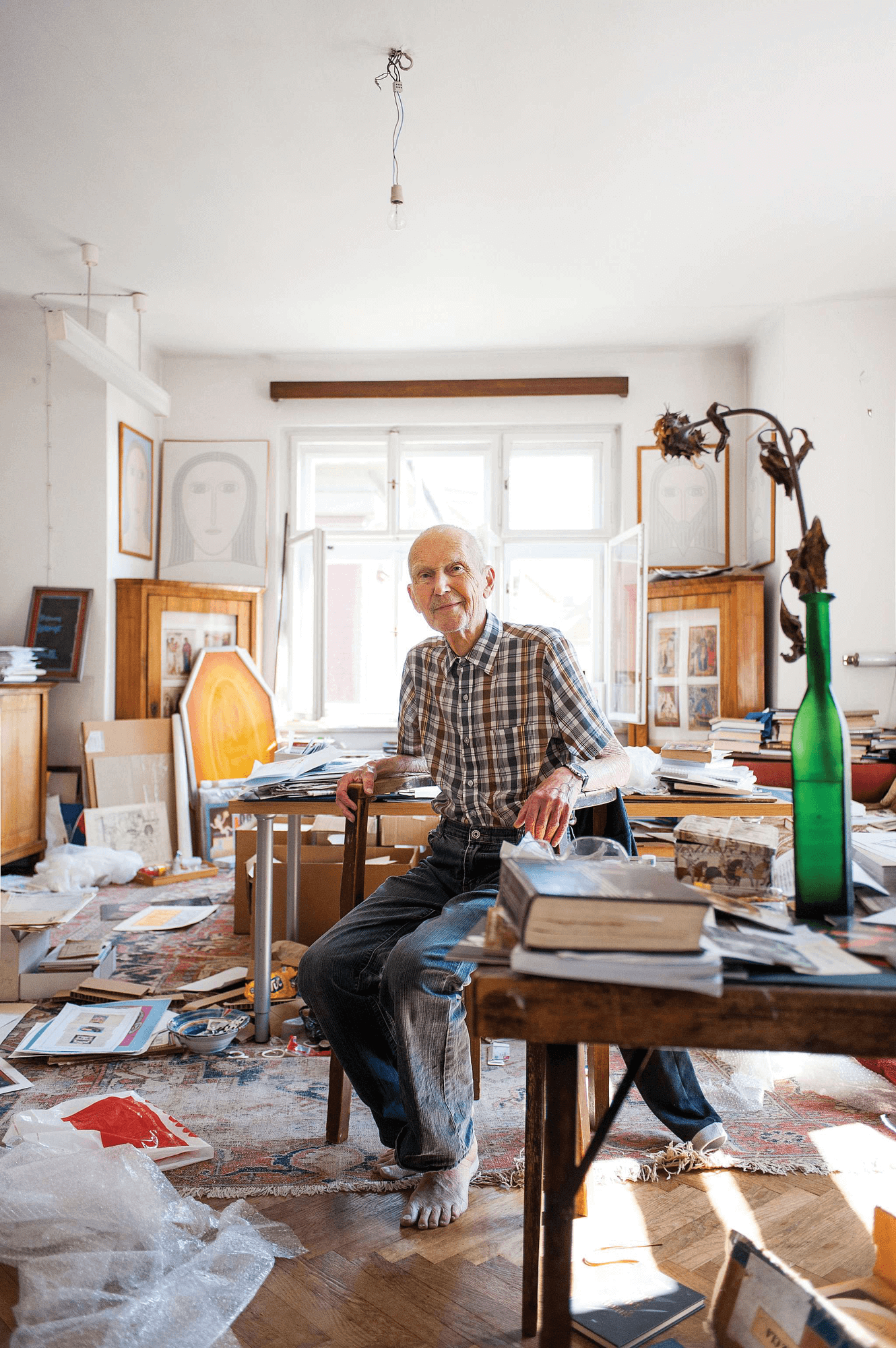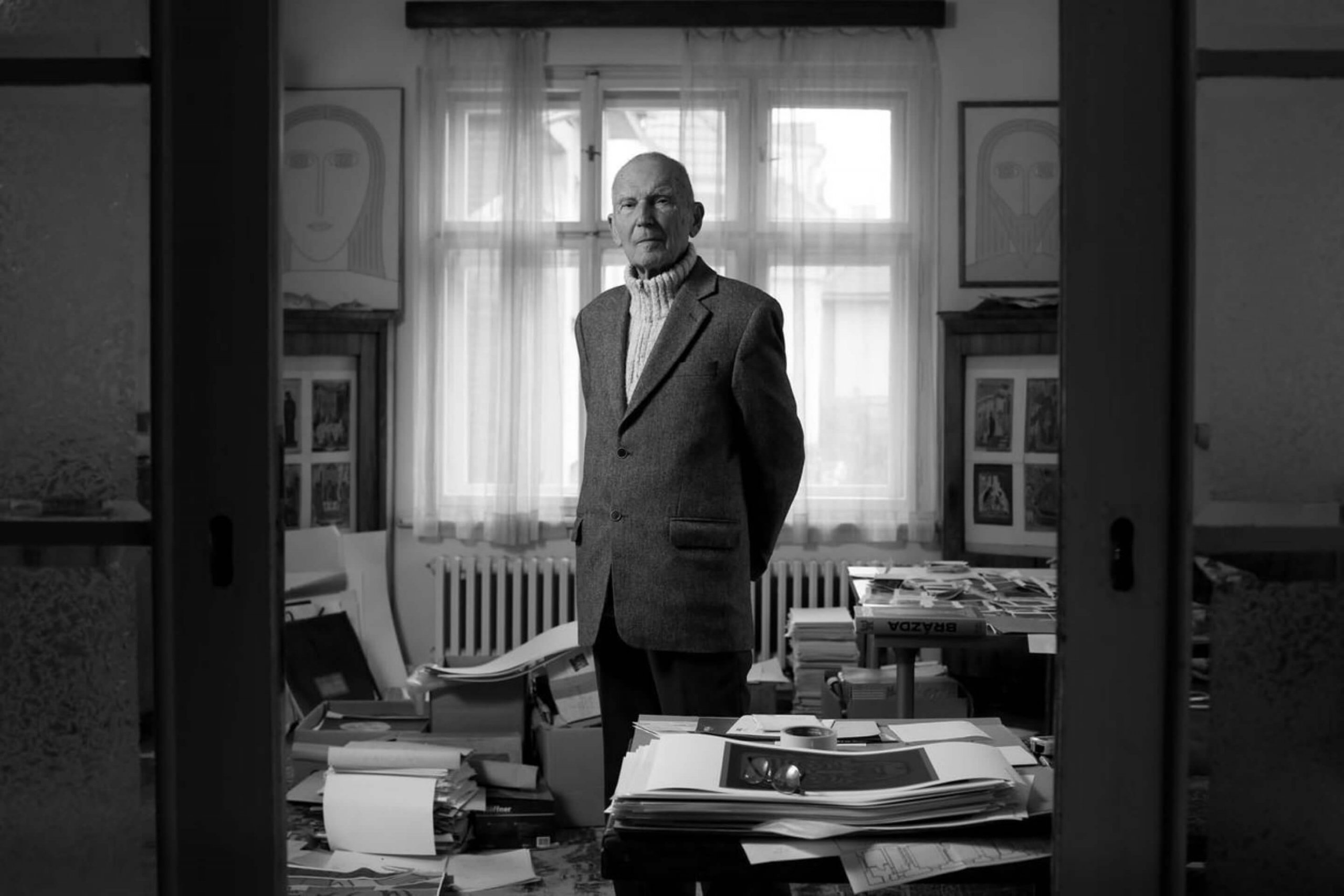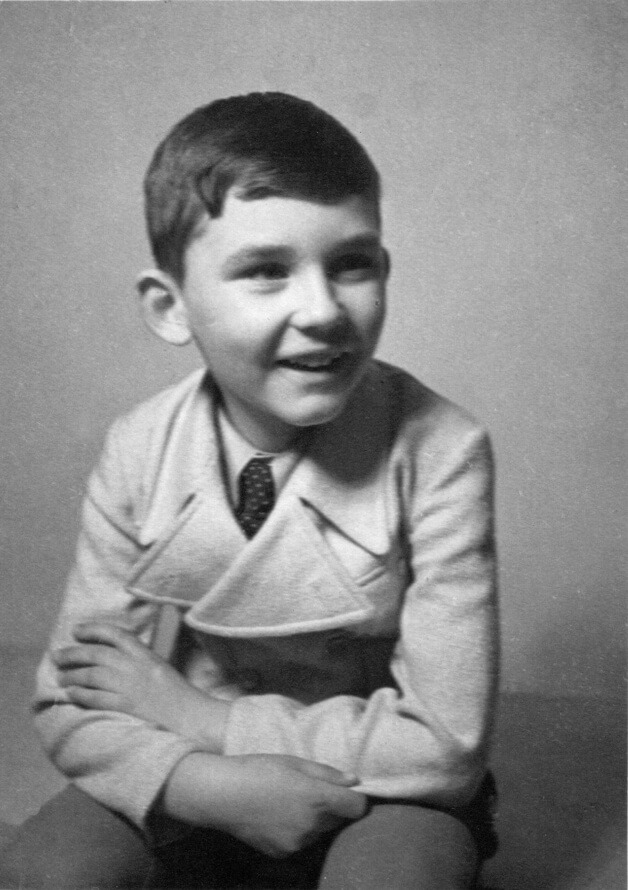
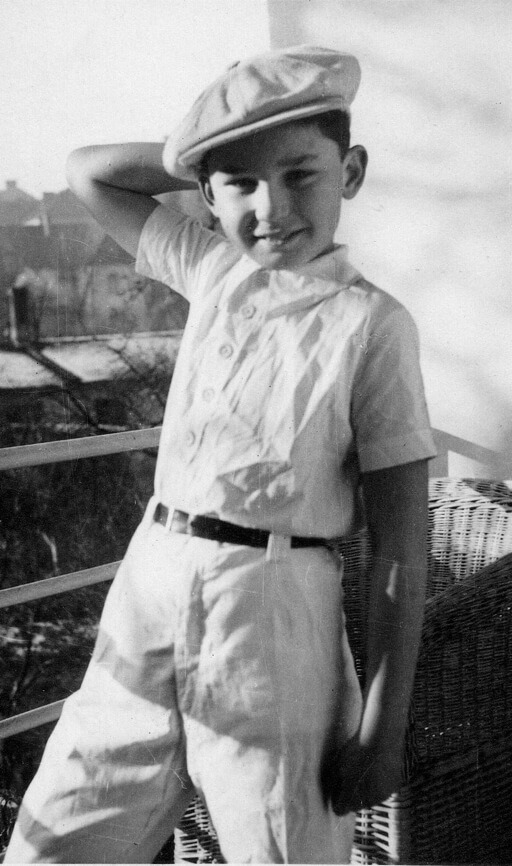
1926
PB was born on 21 August 1926 into a wealthy Brno family as the eldest of three children (Helena *1928, Eva *1940). His father, JUDr. Osvald Brázda, was a barrister and a leader of the agrarian party. His mother, Eva Brázdová, was the daughter of Josef Koželuha, who established the family’s wealth, and Helena Koželuhová, sister of the Čapek brothers, who married the poet and diplomat Josef Palivec after the death of her husband. Eva’s younger sister, JUDr. Helena Koželuhová was a well-known anti-communist journalist and wife to JUDr. Adolf Procházka, university law professor and minister of the exile government.
1937
An eleven-year-old PB finishes his first oil paint pictures.
1942
Aged sixteen, he resumes drawing and painting, based on expressionism and cubism.
Following the tradition of left-wing avant-garde, he embraces the idea of communism.
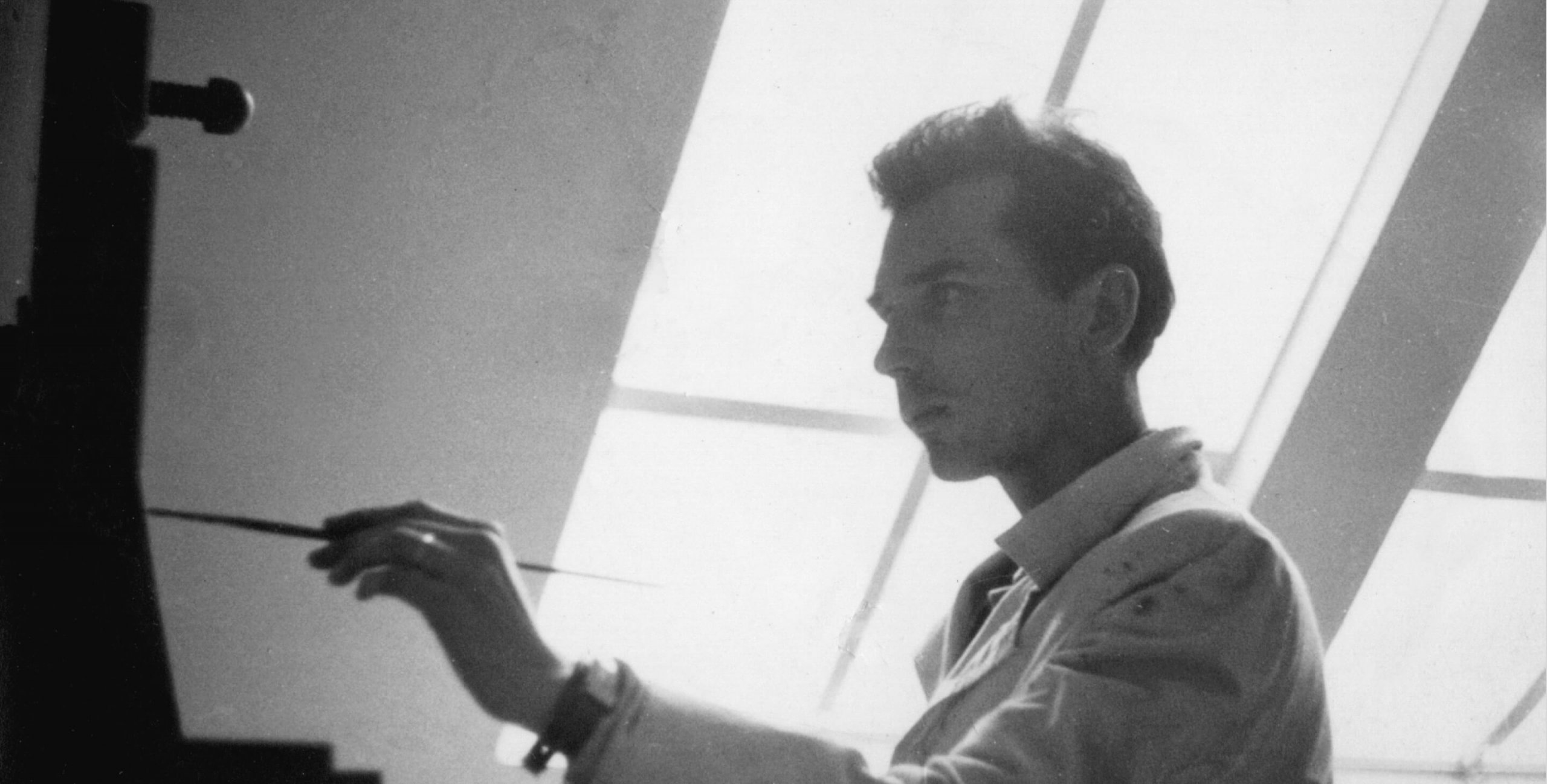
1943
With his friend Jaroslav Dresler PB establishes his own independent movement called Hominism: art about and for people, as opposed to the exclusivity of art as PB encountered it at home. He draws his subjects from both everyday and festive life of ordinary people.
In the realm of art, PB is inspired by painters Josef Čapek, Jan Zrzavý, Group 42 and other modern movements.
1944
In autumn, instead of going to the 8th grade of grammar school, PB is forced to work as lumberjack.
“You know, back then I was fascinated by that astonishing roaring of automobile engines. The surge of the modern world… And I was influenced by Devětsil and Nezval, no doubt about that, especially Nezval’s Poems of the Night. And their connections to the Paris circle, and Guillaume Apollinaire… I knew Group 42; at the time, really original, avant-garde things were going on, especially paintings of industrial and modern landscapes, those were unheard of until then.” (REFLEX, September 2016, p. 45)
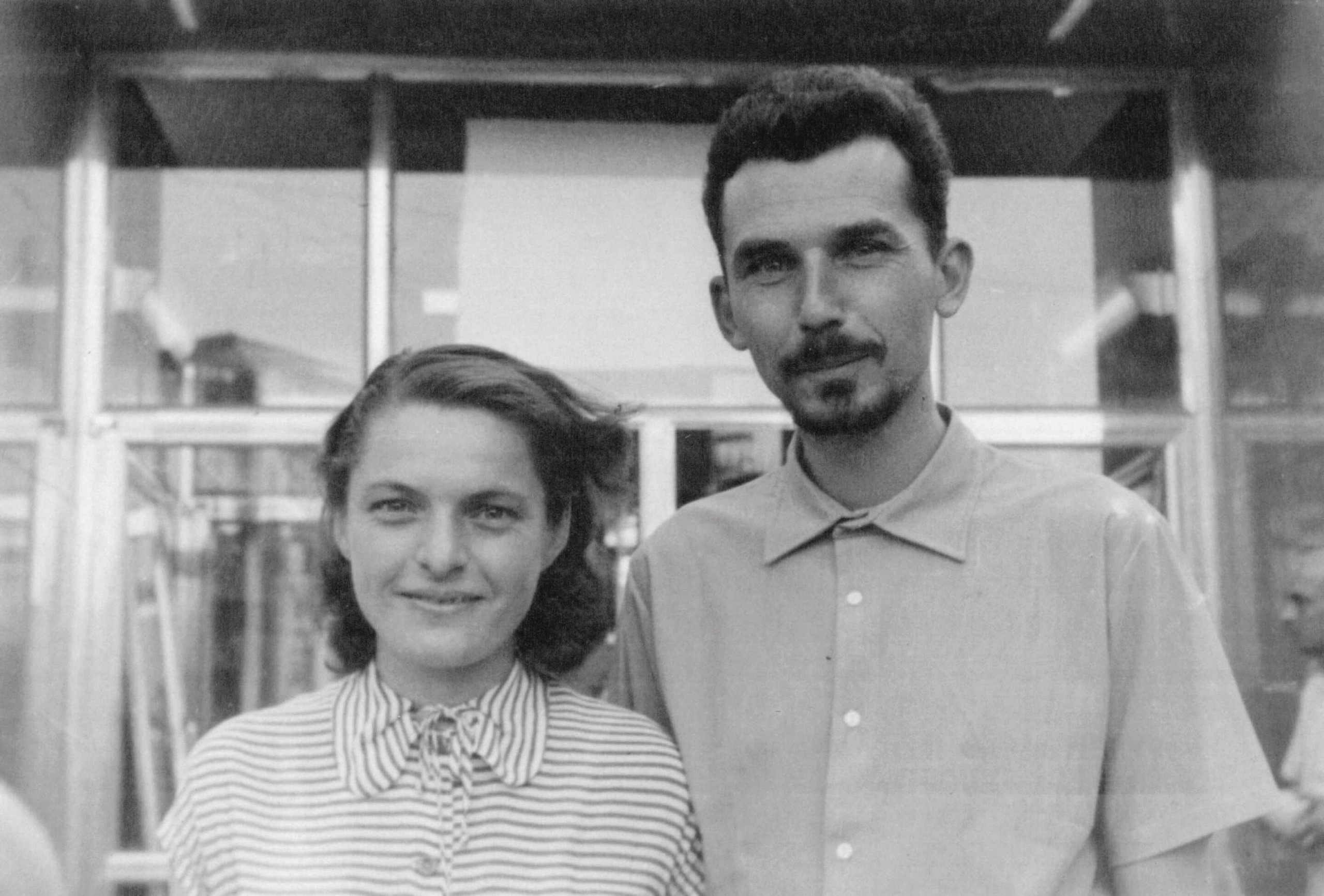
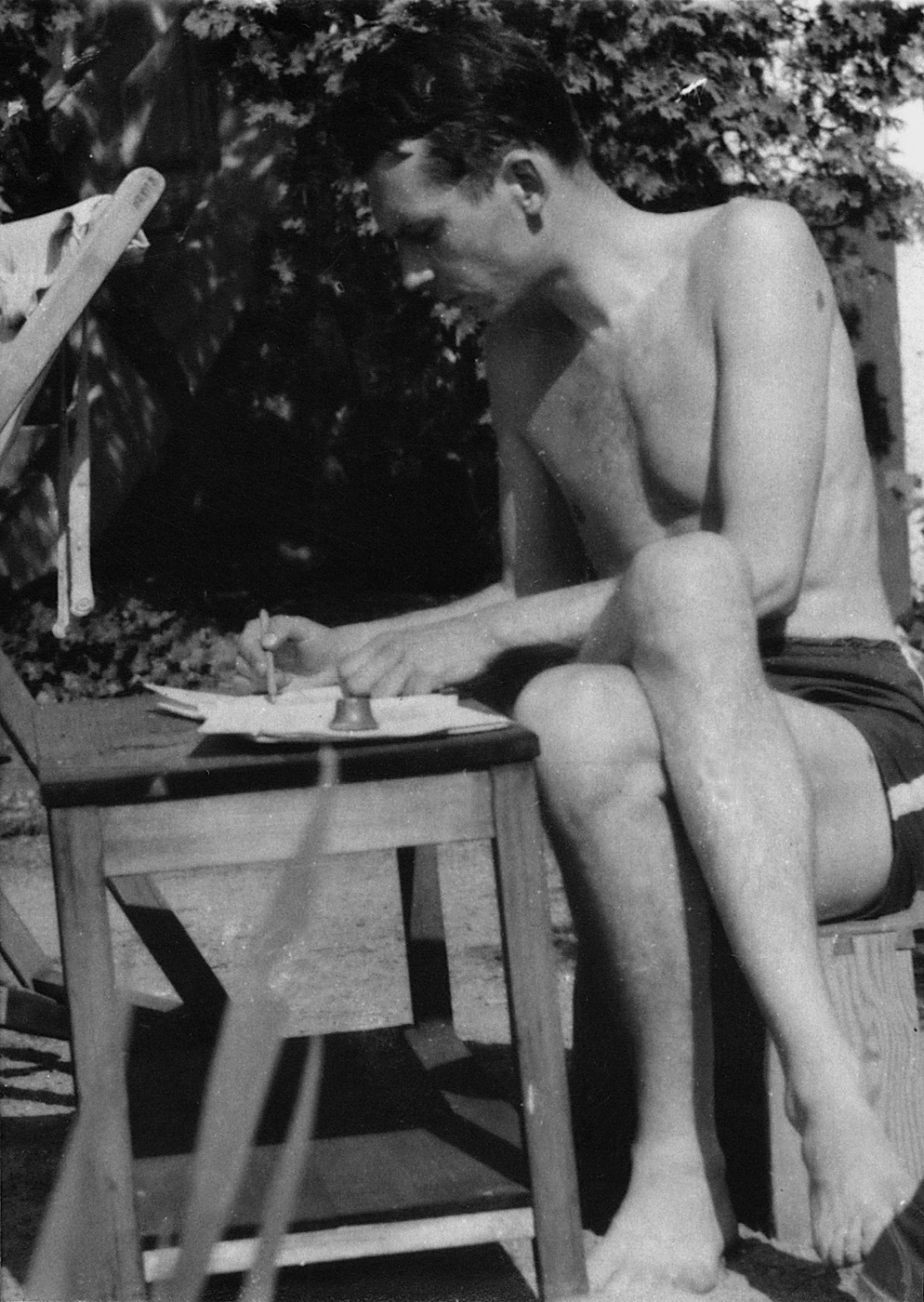
1945
In May, PB becomes a voluntary employee of the Communist party regional secretariat in Brno. Despite that, he never signed the entry form in the party. In June, after seeing the party’s deceptive strategy in practice, he radically breaks up with it. He writes an extensive report about the eviction of Germans out of Brno and the conditions in a concentration camp. He sends the report titled “Aren’t We Nationalists, or Fascism in Czechoslovakia” to all prominent newspapers and magazines but it never gets published. He signs up for the study programme History of Art and Philosophy at Masaryk University in Brno.
1946
PB is admitted to Professor Filla’s studio at the Academy of Arts, Architecture & Design in Prague (VŠUP).
1947
PB is expelled from VŠUP for lack of interest. PB is admitted for the 3rd term to Professor Sychra’s workshop at the Academy of Fine Arts in Prague. There he becomes close to Ivan Sobotka. He lives in lodgings.
1948
PB becomes close to his fellow student and future wife Věra Nováková. After the Communist coup in February, JUDr. Osvald Brázda is deprived of the right to practice law. Following a decision of the National Committee of Brno with the preface “Work is not punishment but honour”, Brázda is sent to a forced labour camp.
The property of both PB’s parents is confiscated.
From mid-1948, PB lives with Mr and Mrs Palivec.
1949
Following the political checks in early 1949 PB and VN are expelled from their studies and designated for manual labour. They paint together in a room rented for Věra by her parents. PB becomes a house painter apprentice at master Výborný’s workshop. He learns the craft but doesn’t have to practice it.
JUDr. Brázda is released from the labour camp, allegedly for health reasons. The Brázdas are expelled from Brno and their large flat is confiscated. The family, along with a daughter not yet of age are to be moved to the frontiers. However, they manage to keep a room with a kitchen in their country villa. Towards the end of the year, JUDr. Palivec is arrested, and in the next year is sentenced to twenty years’ imprisonment. Thanks to the support of H. Palivcová and both PB’s and VN’s parents, they can continue to paint.
1950
PB is supposed to enter painting and decorating boarding school in Nechanice. Helena Palivcová’s large flat, which she shares only with her grandson apart from her housekeeper, is under threat of confiscation. To save the flat, PB and VN enter into a civil marriage on 24 August. Both are accepted to the 3rd year of Secondary school of Applied Arts.
1950-52
Both attend Secondary School of Applied Arts, thanks to the courage of the director, Professor Solnar, who camouflaged their obligatory ideological profiles. Consequently, they are allowed to make their living as “vocational artists”, without chances to exhibit their work. They are registered in the Czechoslovak Artist Union (ČSVU). They never become the union’s candidates and members. They make their living working on small, undemanding illustrations for children’s magazines, later illustrating science and medical literature.
Without exhibiting them, PB finishes paintings like the self-portrait P.B. 49 or The Monster’s waiting, the Monster’s Biding Time (1949), Five Minutes before the End of the World (1945–1963), Forgotten to Shave, Have You? (1950), Věra with Out-painted Wings (1951), but also idyllic paintings (Do-gooders, Walk to the Paradise etc.).
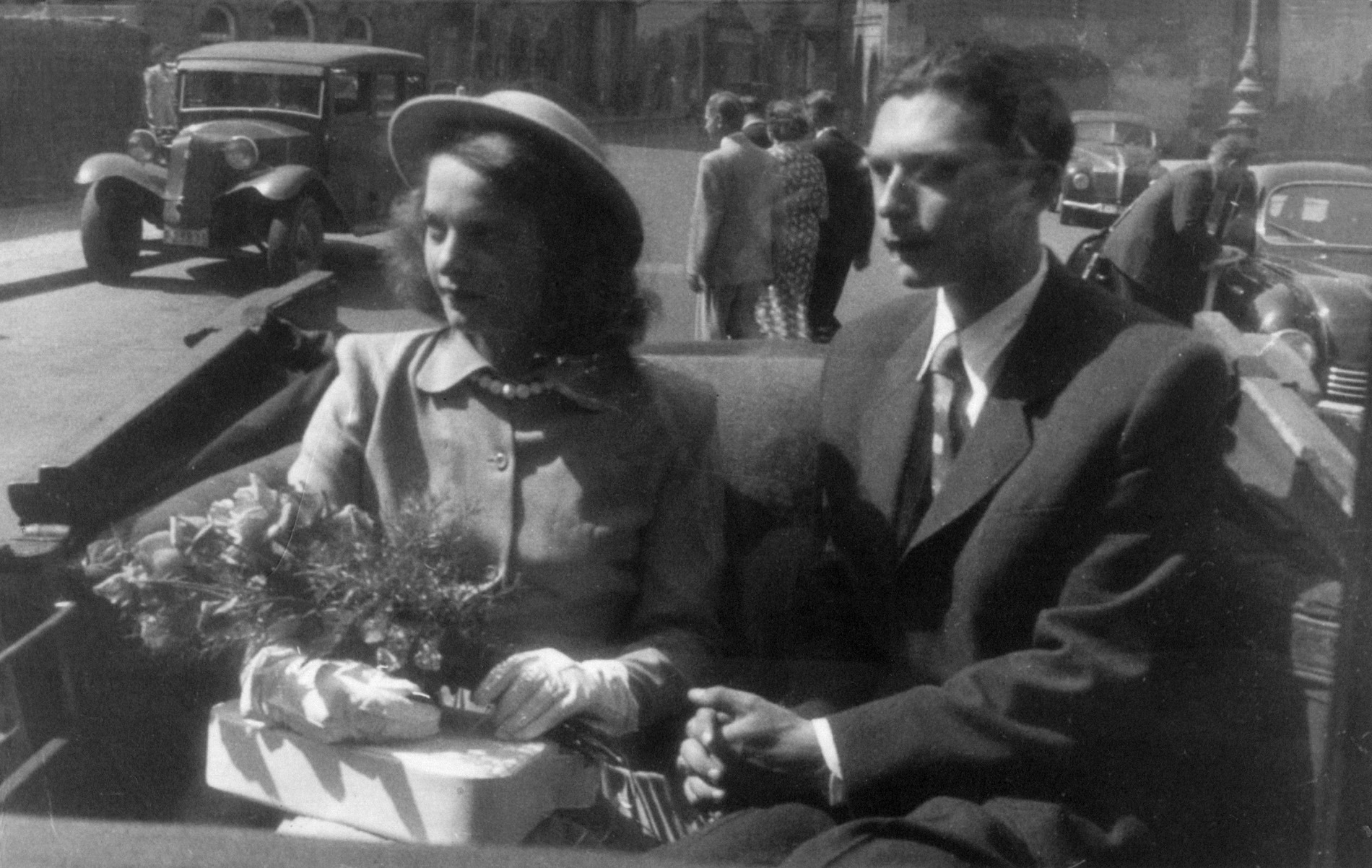
“In the 1950s, I put myself mentally together after a long crisis and finally started painting properly, thanks to Věra. We lived through the harsh 1950s in perfect communion. Věra creates work that is completely distinctive, original and independent of me. She won and defended her independence in many things that I radically disagreed with.” (Interview for Art & Antik, November 2005. In: BRÁZDA, p. 9)

1956–1958
Thanks to the offer of Vlastimil Beneš, the secretary of ČSVU, PB wins the union’s special scholarship that allows him to devote more time to drawing and painting.
Based on preparatory drawings, PB paints colourful depictions of racers.
1957
PB’s mother Eva Brázdová learns to embroider pictures on the stencils PB sends her, in order to fight depression from her troublesome situation. She makes a number of charming embroidered pictures.
1958
After an attempted suicide, an escape from a harsh social and personal situation, Eva Brázdová dies of a ruptured aneurysm at the age of 52. VN, who gradually converts to Catholicism, gets baptised.
1959
On 1 March PB and VN’s daughter Kateřina is born.
1967
PB for the first time exhibits three paintings in the 1st Prague Saloon, which was open to non-members of the Czechoslovak Artist Union.
1968
In the following 2nd Prague Saloon, Jiří Kolář rejects the presented collage of PB’s and VN’s paintings and promises to organize an exhibition in a new hall. As a result, PB only exhibits the relief Stalin’s races. Following an order by the authorities, the title is removed.
1970+
PB casts plaster forms and creates series of heads, relief faces inspired by the classical models of Mesopotamia, Egypt and ancient Greece.
1975
An extensive exhibition complete with a catalogue is made for the large hall of the State Institute for Drug Control and its galleries. However, Czechoslovak Artist Union did not allow it to take place.
photograph: PB in coke heating plant
“It was with relief that I entered the heating plant in 1977, and I worked there for ten years. That was the best thing ever. I was there with Karel Palek, whom I knew from illegal publications under the pseudonym Petr Fidelius. We furnished it really well. In the adjoining cellar room there was everything we needed, a stove and telephone, armchairs and a couch to sleep on during night and multiple-day shifts.” (Interview for Art & Antik, November 2005. In: BRÁZDA, p. 10)
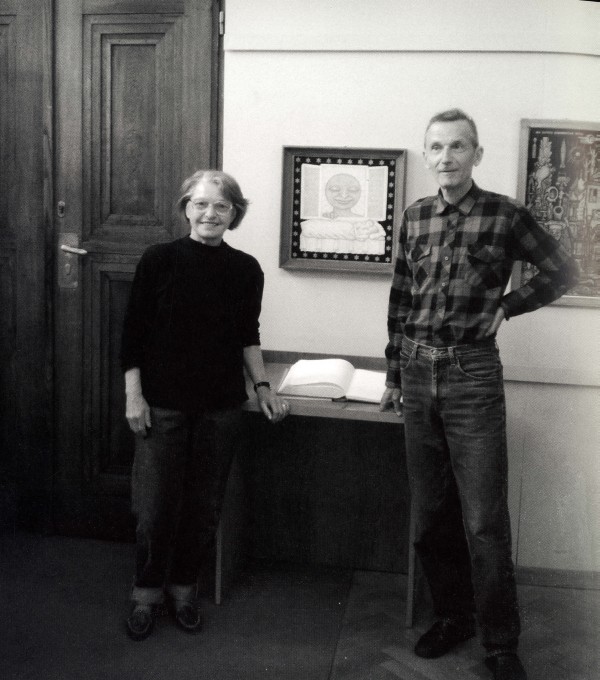
1976
PB and VN have an exhibition for the first time in a small room of Divadlo v Nerudovce.
1977
PB starts working as a boiler operator in the heating plant of the 1st dental clinic at Albertov. Since his colleague Karel Palek, already known as Petr Fidelius, compiles an illegal Critical anthology here, they both decide not to sign Charter 77. PB works here for ten years. In 1980s he becomes close to Michal Singer.
1987
PB becomes a pensioner and is allowed to travel to the USA. He goes there with VN.
1989
With a relatively large collection, PB introduces his work at the exhibition titled The Past and the Future in the cellars under the Vinohrady Market Hall. Viktor Karlík shows interest in his work and offers to interview him for Revolver Revue, which was still illegal at the time. PB also becomes close to the Caucus of young artists and with his article “Against the neo-Stalinist statutes of ČSVU” contributes to their rebellion against the leadership of the union. The Union sends him a registration form.
He is invited to a festival of independent Czech culture in Wroclaw. All his paintings sent to the festival are confiscated, PB is arrested at the border and sent back to Prague.
After 17 November he establishes the Centre for production and distribution of printed materials of the Civic Forum. He becomes a member of the Czech Artists’ Action Committee.
1990
In the first post-revolution issue of Revolver Revue, PB’s paintings are extensively reproduced for the first time, accompanied by a commentary and text by Viktor Karlík and Terezie Pokorná.
1991
As the first artist PB receives an award by Revolver Revue.
1992
PB’s and VN’s first extensive exhibition is organized in the Cultural centre Ženské domovy in Prague, thanks to Viktor Karlík and Michal Blažek. The exhibition then travels to other Czech cities, also to Budapest (Czechoslovak Culture Centre) and Berlin: the Grenzenlos festival, Kulturelle Begegnung Prag-Berlin, Trepp Tower Galerie.
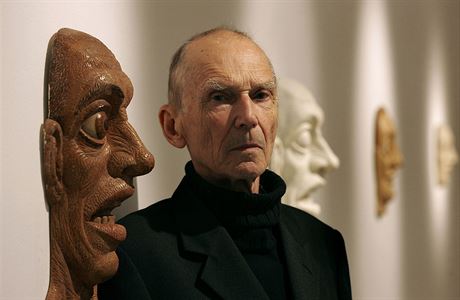
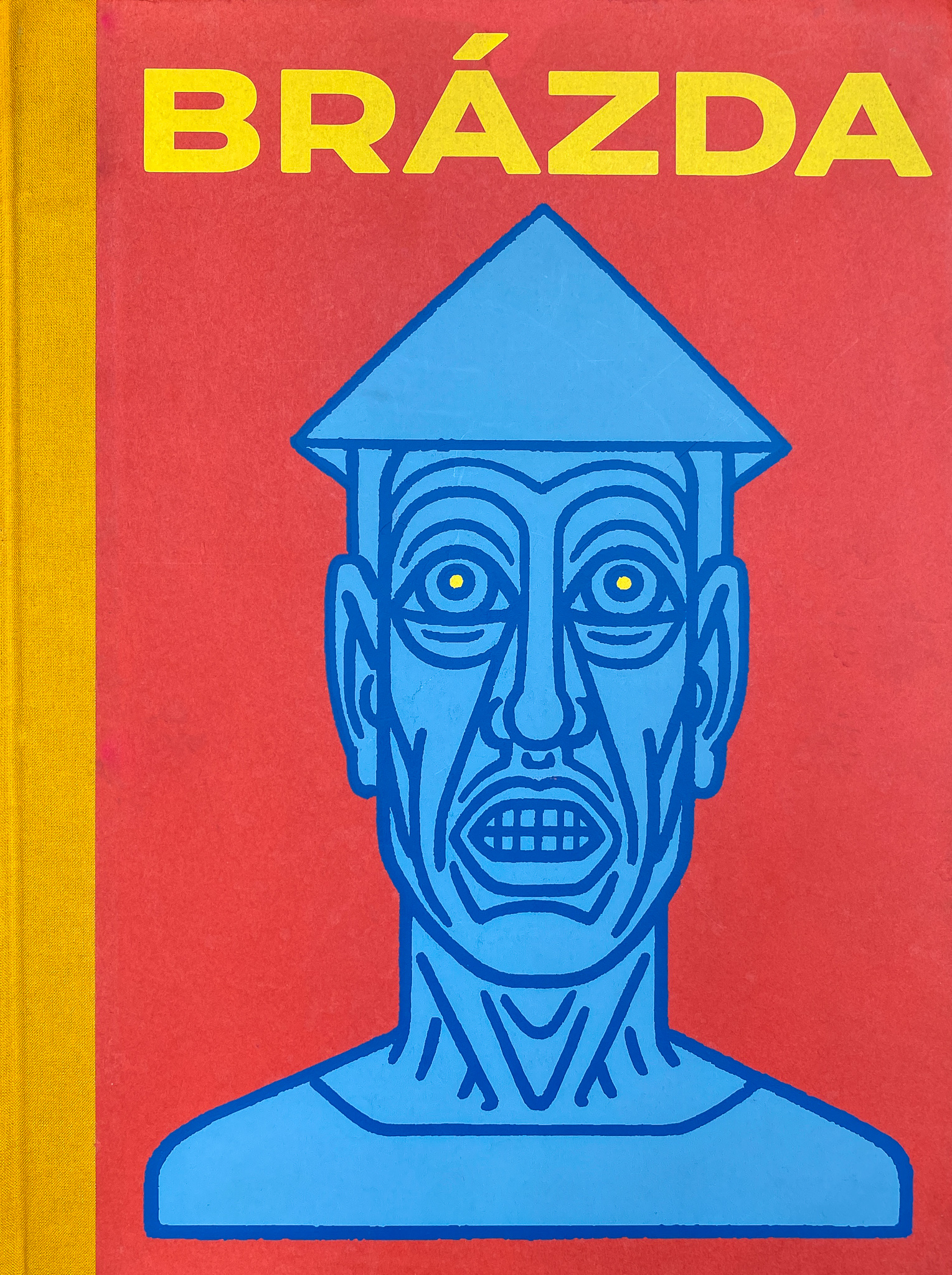
21st century
A number of exhibitions followed in galleries both in and outside Prague, abroad, and towards the end of the 1990s PB’s work featured in displays organized by the National gallery and others. Since 2000, several of Pavel Brázda’s paintings are part of the permanent exhibition of modern art in Prague’s Veletržní palác. In 2006–2007 an important retrospective exhibition of his work took place in Veletržní palác and an extensive monograph Brázda was published by Argo. In 2007, he received the Personality of the Year Award, on 28 October he was awarded the state decoration by the President. In 2013, however, PB returned the decoration to express his disapproval of President Václav Klaus’s actions in the office.
2007
Pavel Brázda gets acquainted with the computer. After lots of experience with xerox, single-toner copy machines and collages he discovered more convenient digital graphics and started working on many coloured variations of drawings mostly from 1990s.
“With his typical fierceness he cranks out paintings in several colour variations on the computer, and so his current work results in Warhol-like mass production.”
“The funny thing is that when I was proposed for the medal, National Gallery did not recommend me. The director Knížák said that orders shouldn’t be given to living artists. And then he accepted the very same medal two years later!”
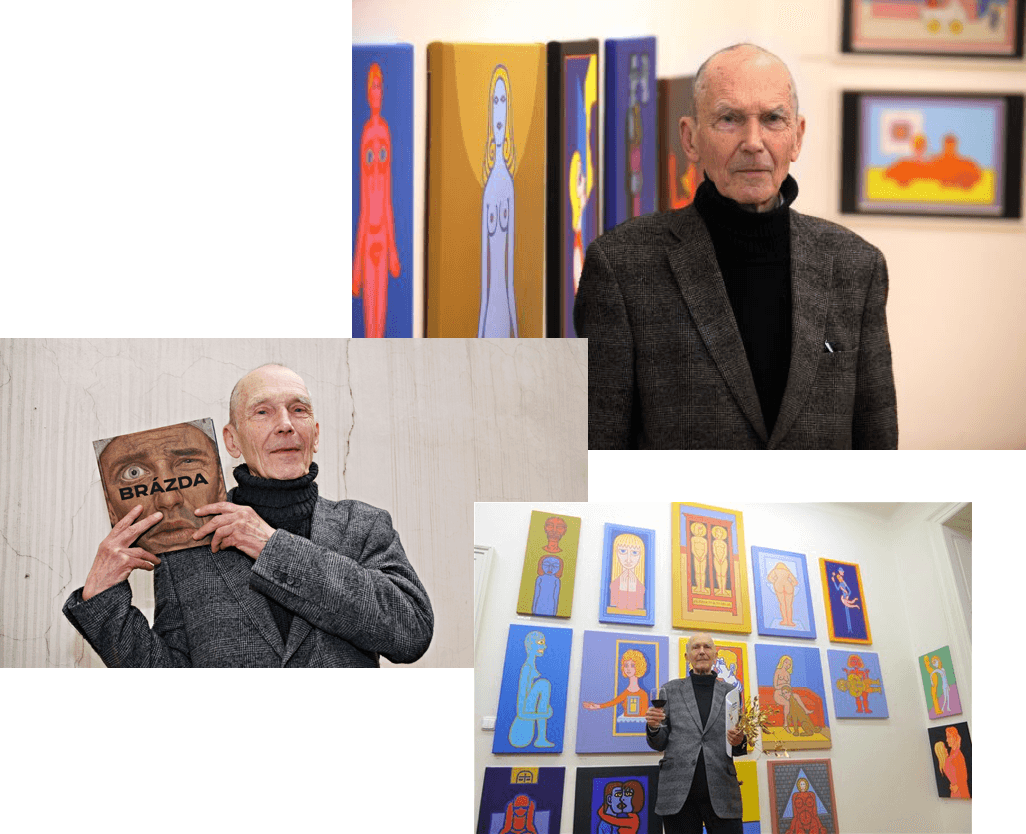
Several TV documentaries have been made about Brázda’s life and work. Pavel Brázda also contributed to many exhibitions both in the Czech Republic and abroad. The most notable include a display of his works created between 1949 and 2012 in the Moscow Proun gallery, an extensive exhibition in the Municipal house or a retrospective in the Gallery of Central Bohemia in Kutná Hora, organize at the occasion of the artist’s 90th birthday under the title Between beginnings and ends. Also worth mentioning was an extensive retrospective exhibition featuring Pavel Brázda and his wife Věra Nováková in Český Krumlov’s Egon Schiele Art centre.
2017
Pavel Brázda died on the third Sunday of Advent (17 December).
As both spouses found themselves in isolation after being expelled from the Academy and could not exhibit their work, their work remained unknown and truly unique. Both are one-of-a-kind: distinctive, original artists.
